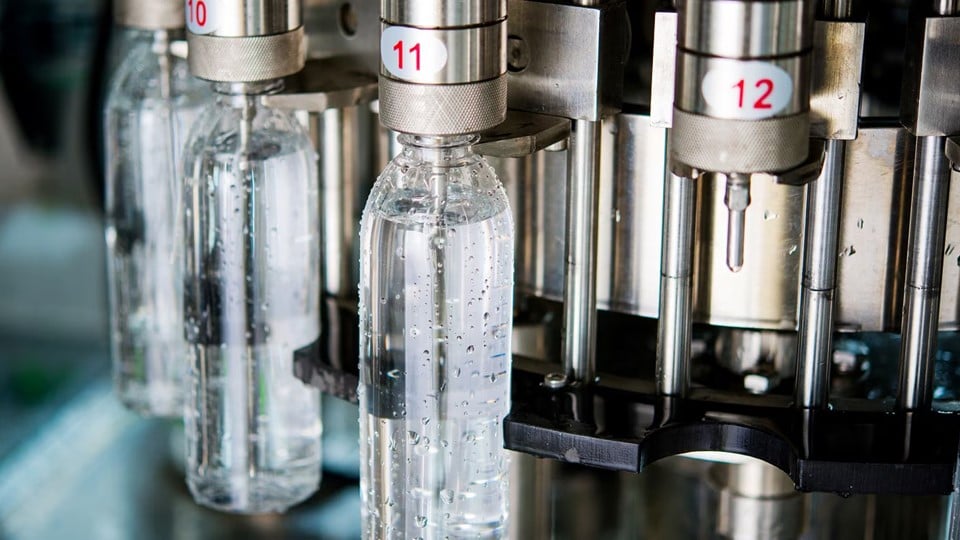Solution
Advanced proposal for the required high efficiency district heating and cooling systems
Mitsubishi Heavy Industries Thermal Systems' centrifugal chillers are used in a variety of facilities around the world according to their size and needs, including in district heating and cooling systems and factory air-conditioning systems that operate day and night. Mitsubishi Heavy Industries Thermal Systems, Ltd. (“MHI Thermal Systems”) is able to propose optimal control systems for district heating and cooling plant applications using customized centrifugal chillers and an optimized service menu to fulfill the customer’s needs.
FEATURES
Example customization: series counterflow
To achieve an optimal plant design and operating system that considers the cooling load demands and the small footprint of the customers’ facility, we proposed a centrifugal chiller considering its features. One example is parallel centrifugal chillers which have two compressors for a single heat exchanger/evaporator/condenser set. The compressors' refrigerant circuits are independent and the water circuit for both the evaporator and the condenser have a counter flow arrangement. These characteristics are able to contribute to the achievement of the required large cooling capacity and high efficiency inside the small footprint of the centrifugal chiller.


3D model: Parallel centrifugal chiller
Example customization: excess flow control system for chilled water
In the chiller plant system, the number of operating chillers may become greater than required by the cooling load because of the minimum chilled water flow rate when demand is not so high. For example, from an energy conservation perspective, it is inappropriate to operate three chiller units in condition that require the chilled water flow rate of three chiller units but only the cooling capacity of a single chiller. In this case, we normally propose a customized chiller unit which includes a single chiller able to provide three times the chilled water rate. Specifically, by designing a chiller that is able to handle a higher flow rate than the rated flow rate of the chiller’s water pump (e.g. 200 or 300% of nominal flow), we are able to conserve energy by reducing the number of operating chiller units.
Figure 1: Suppression of the Number of Operating Chiller Units by Over Flow Control
Notes: - Rated chilled water flow rate is 503 m3/h or 403 m3/h (80%) for operating multiple chiller units. - Only one chiller unit operates by the adoption of over flow control system (300%).
Figure 2: Improvement of Centrifugal Chiller System COP by Over Flow Control
* Normally, when the return water becomes too cold to allow operation at the designed delta-T, the number of chillers that operate is determined based not on the cooling load but on the flow rate of the chilled water. This issue can be resolved by increasing the flow rate of the chilled water.

Exceeding standard flow rate
Example customization: double evaporator
This is a special solution for improving overall system COP (Coefficient of Performance). This centrifugal chiller , which has two independent evaporators in one unit, has been customized for two operation modes with water in a chilled water mode and with brine in an ice storage mode. In some countries, the electricity can be purchased at very low prices during the certain times of the day and the centrifugal chiller should be operated in the ice storage mode to store cooling during those periods. The stored cooling energy will be discharged during the times when the price of electricity is high to effectively reduce the cost of energy by utilizing the two operation modes during the suitable times.

3D model of Mitsubishi Heavy Industries centrifugal chiller featuring an evaporator for the air conditioning mode and one for ice storage mode using a single centrifugal chiller.

Improving the COP of district heating and cooling systems
MHI Thermal Systems provides thorough services and customer support to contribute to its customers' achievement of their energy conservation goals. This includes the customization of necessary hardware and software to achieve customer’s COP improvement goals.

Solving customers' district heating and cooling system challenges
To resolve the issues and challenges faced by our customers related to the environment, energy, energy conservation and CO₂ emissions reduction, MHI Thermal Systems proposes optimal solutions and services, including hardware tuning and a variety of services leveraging our significant expertise and technical capabilities.








